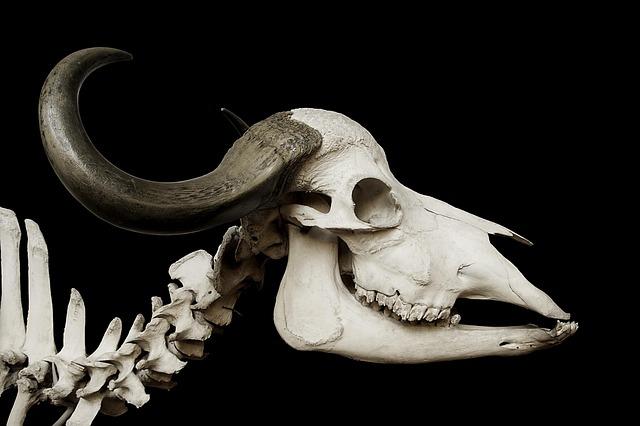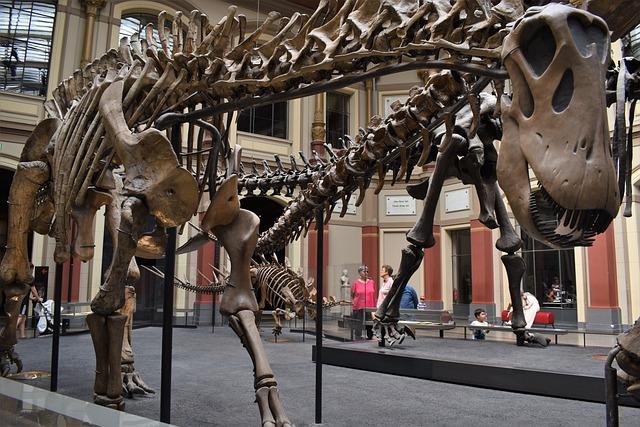In a groundbreaking revelation that sheds mild on historical ecosystems, a crew of archaeologists has exposed a remarkably preserved cranium within the center of Egypt, providing new insights into the ambitious predators that roamed Africa tens of millions of years in the past.This discovering now not most effective enhances our figuring out of the area’s prehistoric fauna however additionally highlights the intricate internet of existence that as soon as thrived in Africa’s numerous habitats. As scientists delve deeper into the results of this cranium, they are charting the behaviors and traits of this most sensible predator, illuminating a bankruptcy of Earth’s historical past that has lengthy been veiled in thriller. This text explores the importance of the discovery, the technique at the back of the analysis, and what this cranium tells us about the ecological dynamics of historical Africa.
Unveiling the Previous: The invention of a Most sensible Predator in Historic Egypt
The contemporary discovery of a fossilized cranium in Egypt has despatched ripples during the medical neighborhood, revealing the presence of an impressive predator that as soon as roamed historical Africa. Courting again a number of million years,this specimen supplies new insights into the complexities of the area’s prehistoric ecosystem. Paleontologists consider this carnivorous creature occupied a pivotal position as a most sensible predator, influencing the conduct and evolution of alternative species in its habitat. The cranium has been known as belonging to a up to now unknown genus, providing a glimpse into the numerous fauna that existed all the way through a time when Africa used to be a land of huge deserts interspersed with lush inexperienced oases.
Professionals spotlight a number of key options of the cranium, suggesting complicated predatory variations:
- Tough Jaw Construction: Signifies a robust chunk in a position to subduing massive prey.
- Massive Dog Tooth: Designed for tearing flesh, preferrred for an apex predator.
- Distinctive cranial Form: Might suggest heightened sensory functions, favorable for stalking prey.
| Characteristic | Importance |
|---|---|
| Jaw Dimension | Complements aggressive feeding methods |
| Enamel Morphology | Displays nutritional personal tastes |
| Fossil Age | Is helping date ecological shifts within the area |
This outstanding to find now not most effective enriches our figuring out of prehistoric megafauna but additionally underscores the dynamic evolutionary pressures confronted by means of historical species amidst converting climates and environments. As researchers proceed to check the cranium, additional revelations are expected, promising to shed mild at the intricate internet of existence that characterised the African panorama tens of millions of years in the past.
Anatomy of a Predator: Insights from the Cranium Research

The hot discovery of a cranium in Egypt has shed mild on the traits of an impressive predator that roamed historical African landscapes. The research of this cranium finds a number of key options which might be normally related with apex predators, together with:
- Tough Jaw Construction: The sturdy, elongated jaw signifies a robust chunk, crucial for looking massive prey.
- Sharp Enamel Morphology: The presence of serrated enamel suggests adaptation for gripping and tearing flesh.
- Enhanced Sensory Options: Massive orbits and nasal cavities might suggest willing eyesight and a sturdy sense of odor, assisting in monitoring prey.
Along with thes bodily attributes, the cranium’s size and form be offering insights into the predator’s ecological area of interest. A comparability desk of cranium options highlights the evolutionary characteristics that distinguish this predator from herbivorous contemporaries:
| Characteristic | Predator | Herbivore |
|---|---|---|
| Cranium Width | Vast for muscle attachment | Slender for grazing |
| Enamel kind | Serrated | Flat |
| Jaw Construction | Tough | Light-weight |
The results of those findings underscore the dynamic evolutionary pathways that formed predator and prey relationships in historical ecosystems, revealing a wealthy tapestry of existence that after thrived in Africa’s prehistoric environments.
Ecosystem Dynamics: The Function of This Predator in Historic Africa

In the traditional African ecosystems, the dynamics had been closely influenced by means of most sensible predators that performed a an important position in keeping up the stability in their habitats. The lately came upon cranium in Egypt belongs to a species that used to be now not just a ambitious hunter but additionally an crucial section of its habitat. By way of preying on quite a lot of herbivores, this apex predator helped keep an eye on populations and fostered a various vary of natural world. Working out the intricate relationships between prey and predator supplies precious insights into the complexities of those prehistoric ecosystems.
The ecological affects of such most sensible predators may also be summarized as follows:
- Inhabitants Regulate: By way of conserving herbivore numbers in test,they averted overgrazing.
- Biodiversity Promotion: The presence of predators encourages a selection of species to flourish by means of making a balanced meals internet.
- Behavioral Affect: Predators additionally affect the behaviors and migration patterns of prey, shaping the panorama in their habitats.
For example the position of this predator additional, believe the following desk that highlights key predators and their ecological affects in historical Africa:
| predator | Have an effect on on Ecosystem |
|---|---|
| Massive Carnivore A | Managed herbivore populations, enabling crops regrowth. |
| Massive Carnivore B | Influenced water supply get entry to, riding prey clear of key spaces. |
| Massive Carnivore C | Formed migratory patterns of quite a lot of species thru predation force. |
Implications for Paleontology: What This To find Way for Working out Prehistoric Lifestyles

The invention of this historical cranium in Egypt considerably enriches our figuring out of predatory interactions in prehistoric ecosystems.This most sensible predator most likely occupied a an important place throughout the meals internet of historical Africa, suggesting a fancy community of species relationships this is but to be totally explored. With this to find, researchers can delve into questions on territorial conduct, hunting strategies, and the adaptability of most sensible predators all the way through other climatic stipulations. Moreover, the preservation state of the cranium might supply important insights into the morphological variations that supplied this predator to live to tell the tale and thrive in a all of a sudden converting setting.
Moreover, this cranium opens new avenues for figuring out the evolutionary pathways of extinct species and their recent kinfolk. As paleontologists proceed to investigate the fossil, comparisons may also be made with different predatory species in each the area and globally. Doable implications come with:
- Reconstruction of habitat dynamics: Mapping the place this predator suits into the traditional ecosystems can divulge how those creatures interacted with herbivores and different carnivores.
- Insights into evolutionary tendencies: By way of tracing lineage and morphology,scientists might higher perceive the origins and variations of these days’s apex predators.
- Local weather reaction correlation: Finding out this predator in the context of local weather exchange eventualities might yield observations on survival methods throughout eras.
| Analysis Center of attention | Doable Questions |
|---|---|
| Preadaptation options | What characteristics allowed survival in fluctuating habitats? |
| Nutritional conduct | What does isotopic research divulge about its vitamin? |
| Geographic Distribution | The place else would possibly identical predators have lived? |
Conservation Courses: Studying from Historic Ecosystems for Fashionable Flora and fauna Control

Fresh discoveries, such because the ambitious cranium unearthed in egypt, remind us of the intricate internet of interactions that characterised historical ecosystems. Those ecosystems had been formed by means of dominant predators, like the only represented by means of the cranium, which be offering helpful insights into the jobs species play inside of their habitats. To adapt trendy flora and fauna control methods, we will center of attention on a couple of key classes drawn from those historical environments:
- Predatory Dynamics: Working out how most sensible predators maintained stability amongst prey populations finds the significance of retaining herbal hierarchies in present ecosystems.
- Ecological Resilience: Historic species demonstrated profound adaptability, illustrating the desire for modern conservation methods that bolster resilience to modify.
- Habitat Recovery: Insights from the previous emphasize the importance of restoring herbal habitats which have been altered, making sure the longevity of species.
The exam of those historical creatures additionally leads to a deeper figuring out of biodiversity’s position in ecosystem steadiness. For example, learning the nutritional conduct of most sensible predators can make clear the varieties of crops and different animals that thrived along them. This will surely assist create frameworks for tracking species interactions these days. A comparative have a look at quite a lot of historical habitats supplies a precious reference level for conservationists:
| Historic Ecosystem | Key Species | Conservation Perception |
|---|---|---|
| Savannah of Historic Africa | Massive carnivores (e.g., early large cats) | Holding predator populations is very important to take care of herbivore stability. |
| Coastal Marshlands | Birds and different aquatic species | Wetland conservation complements biodiversity and helps migratory patterns. |
| Forested Areas | Massive herbivores (e.g., historical giraffes) | Tree quilt is important for habitat range; recovery efforts will have to come with reforestation. |
Key Takeaways
the invention of the cranium in Egypt now not most effective enriches our figuring out of historical ecosystems but additionally highlights the complexity of predator-prey relationships in prehistoric Africa. As scientists proceed to investigate this outstanding to find, every fragment of data sheds mild at the variations and behaviors of most sensible predators that after roamed the continent. This important revelation underscores the significance of ongoing paleontological analysis and the attainable for long term discoveries that can additional get to the bottom of the mysteries of our planet’s far away previous. With every new discovering, we get a step nearer to figuring out the intricate tapestry of existence that existed tens of millions of years in the past, inviting us to contemplate the evolution of each our flora and fauna and the species that proportion it these days.
Source link : https://afric.news/2025/02/28/a-skull-found-in-egypt-shows-this-top-predator-stalked-ancient-africa-science-news-magazine/
Writer : Atticus Reed
Submit date : 2025-02-28 13:12:00
Copyright for syndicated content material belongs to the related Source.



